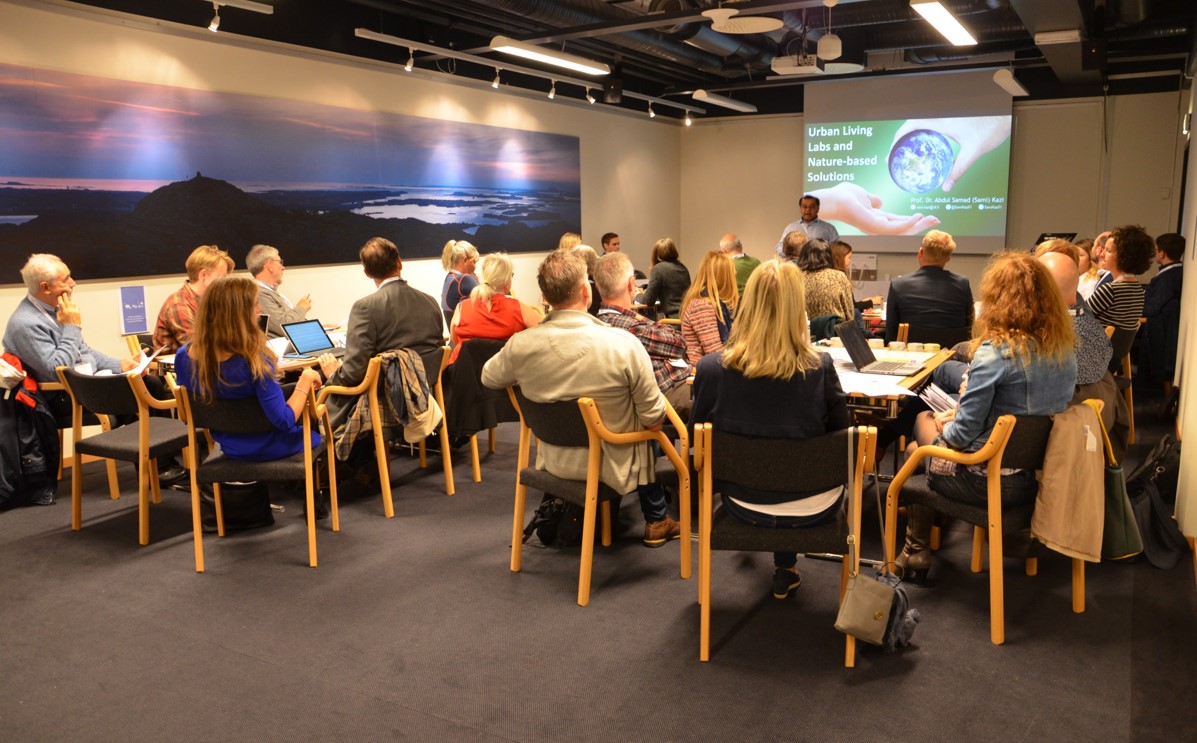
Co-creating Smart Nature-based Spaces – NBS Workshop at the Nordic Edge Expo
- Wed, 09/01/2019
The UNaLab project organised a nature-based solutions workshop at the Nordic Edge Expo & Conference in Stavanger, Norway, with the title ‘Co-creating Smart Nature-based Liveable Spaces – Necessary Solutions for Real Life Challenges’. The aim of the workshop was to explore urban challenges that our European cities are tackling, such as flooding, pollution and densification, and to co-create potential solutions to these challenges.
The session kicked off with an introduction to urban living labs and nature-based solutions, which was given by Sami Kazi, the coordinator of the UNaLab project. These two concepts can be unfamiliar to most people, but to fully immerse in the co-creative session they must be well understood.
Following the introduction, we looked into urban living labs and living lab services. Three successful living lab examples presented their work: the city of Eindhoven, which is also a UNaLab front-runner city developing nature-based solutions in the city centre; Gate 21, which is a Danish living lab host organisation developing smart city projects in Copenhagen; and OULLabs, showing us how living labs can provide a wide range of services to companies.
As the audience warmed up to the idea of urban living labs and nature-based solutions, the co-creative part of the session began. For this part of the workshop we used the CoCo toolkit, which is a gamified co-creation tool developed by Laurea University. Four tables were tackling four different challenges, that had been put forward by different European cities.
The Stavanger City Council, Norway, brought the city’s problem with excess surface water after extreme rain events to one of the tables. The solution presented by the workshop participants is intended to save the gardens and plants from flooding, as it includes a design where the user is working with green solutions to slow down the water in the paths.
![]()
The City of Leeuwarden in the Netherlands faces an imbalance between biodiversity, agriculture and economic profitability, which is creating a problem for the city. The participants told a story of Dave, the unsustainable farmer, and Anita, the sustainable farmer. Anita's case is supported by education in sustainable farming and media outlets for public awareness raising, leading to increased awareness of sustainable farming solutions. This knowledge will encourage citizens to stop buying goods from unsustainable farmers and influence the farmers’ union towards more sustainable farming solutions.
SnailMob from Geneva, Switzerland, presented the problem of traffic congestions that prevent daily last-mile commuting into city centres. The participants in this group created the ‘last green mile ring’ solution, where people park their cars by a ring road surrounding the city and commute into the city centre by using public transportation.
The City of Tampere in Finland introduced a problem that many Nordic cities experience, namely densification that challenges the multi-functionality of small spaces. In order to develop environmental and public functions while the city centre densifies, the participants presented a solution where organisations and NGOs in the city build a consortium to work on the issue through a joint strategy together with the citizens. Engaging people through a participation strategy, including street party events, public exhibitions, digital platforms, school activities, and newspapers, would facilitate crowd sourcing and crowd planning.